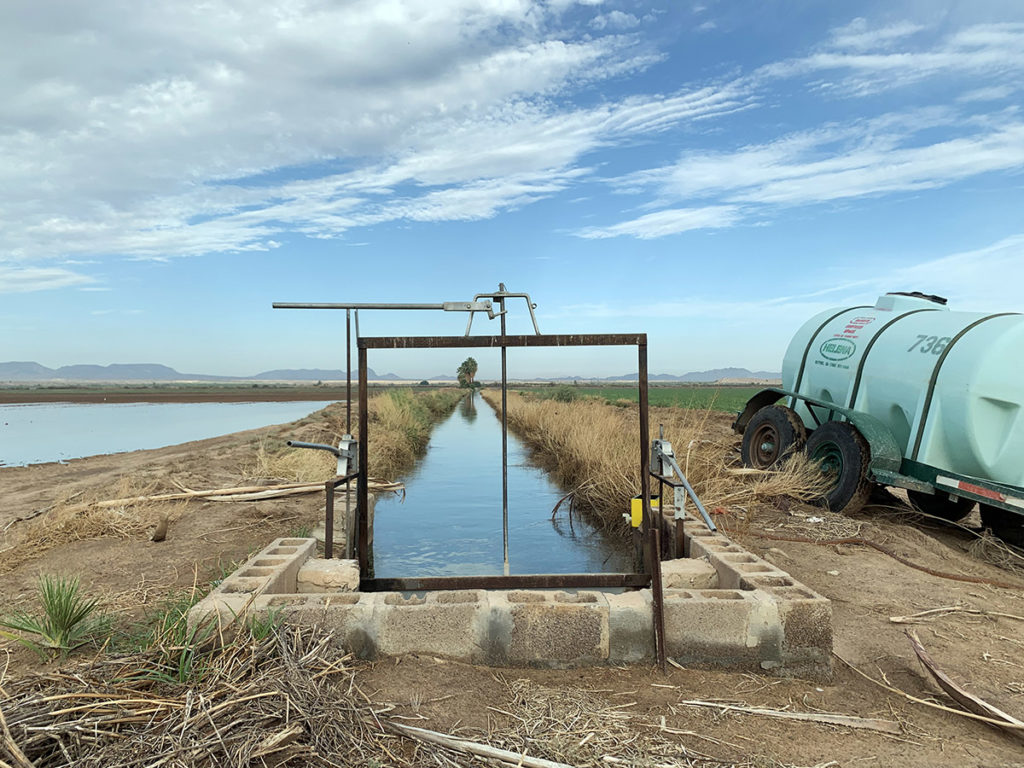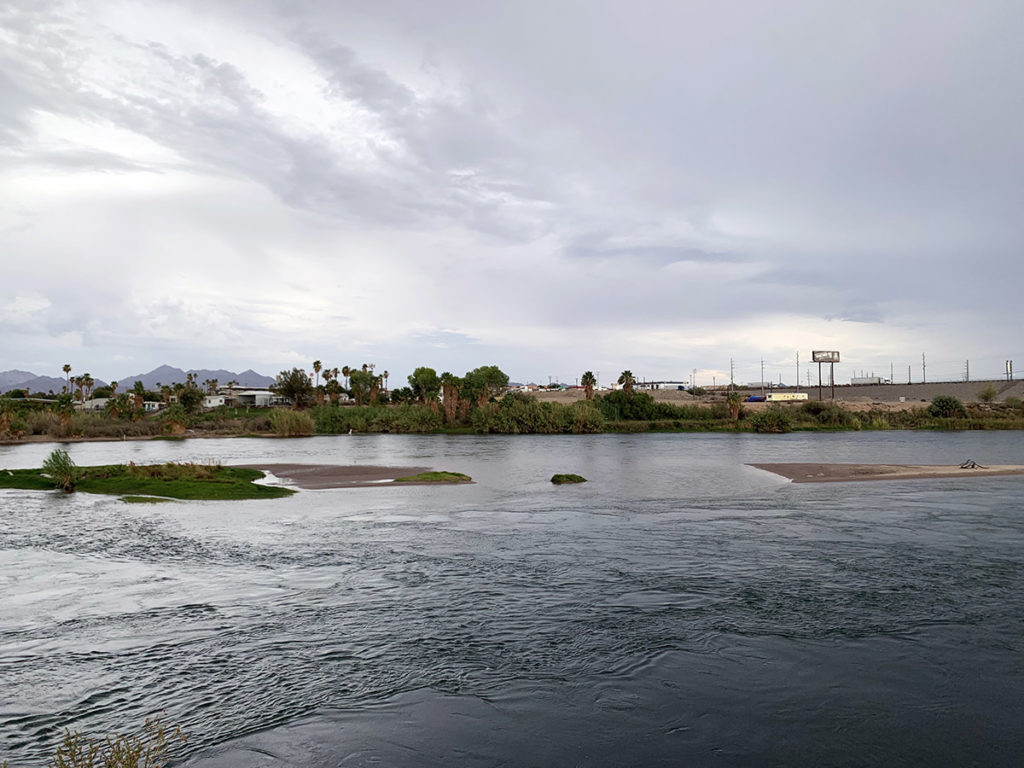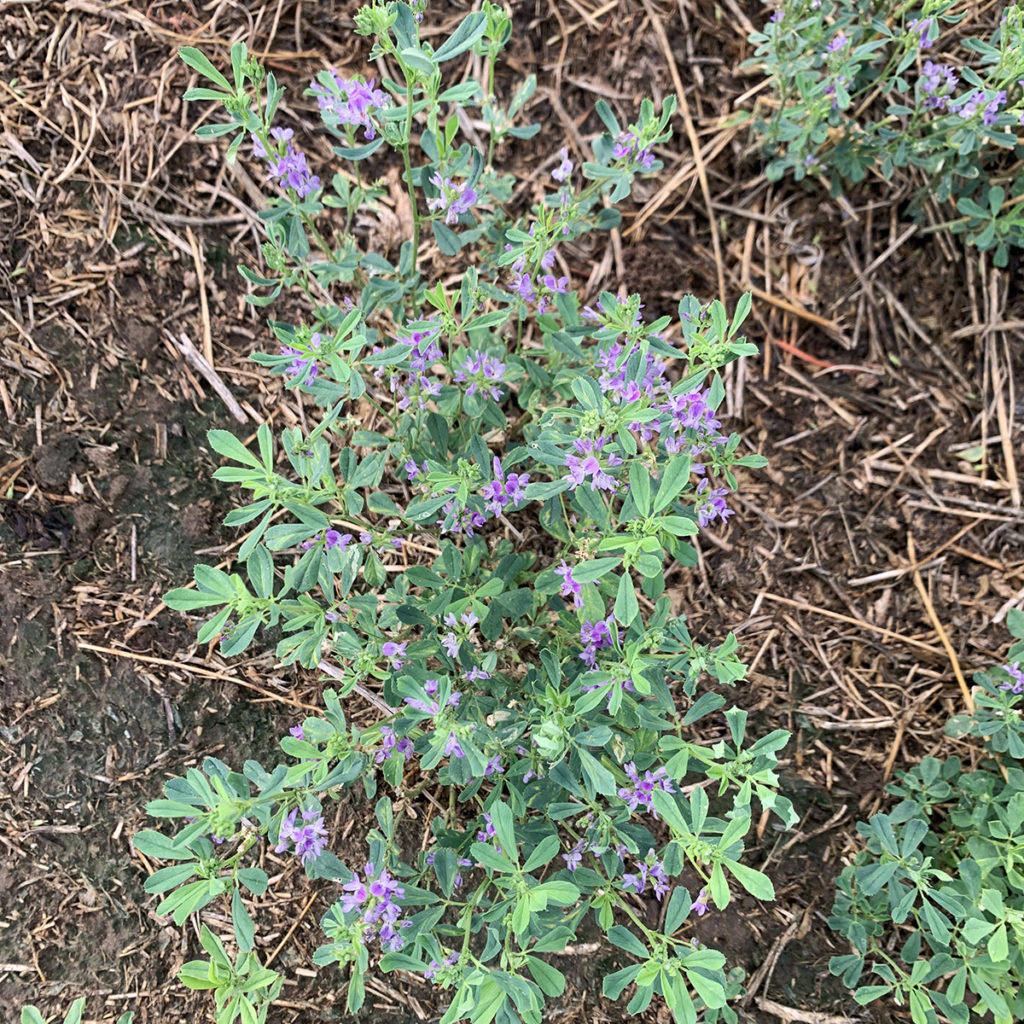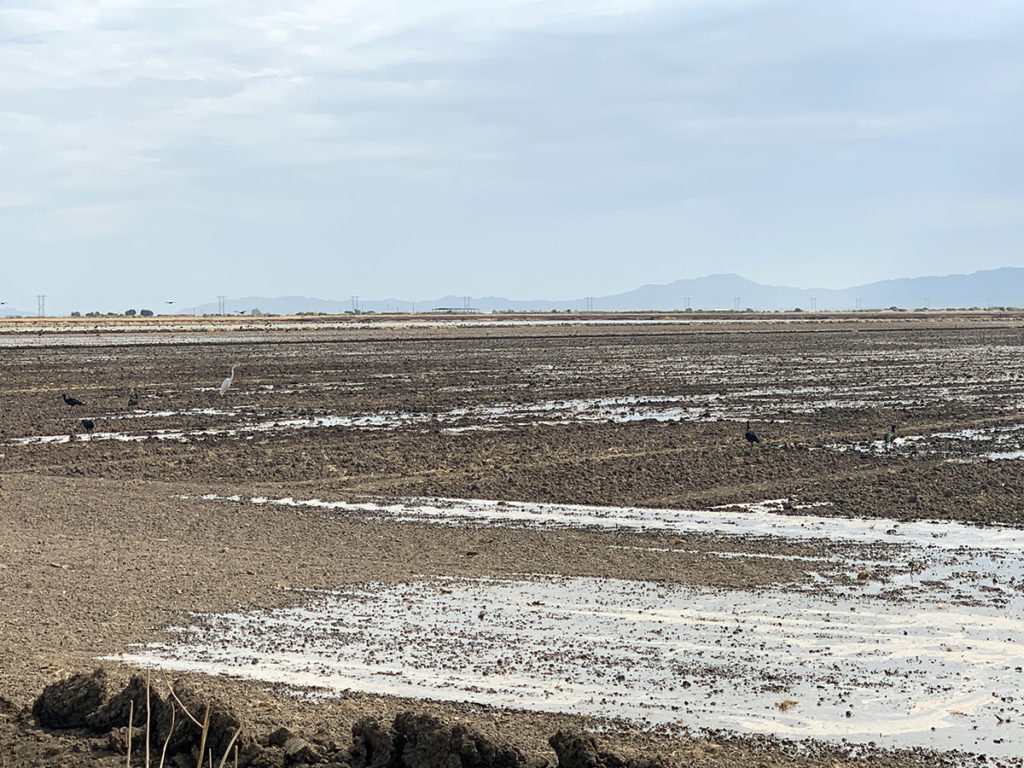Gastropod looks at food through the lens of science and history.
Co-hosts Cynthia Graber and Nicola Twilley serve up a brand new episode every two weeks.
Co-hosts Cynthia Graber and Nicola Twilley serve up a brand new episode every two weeks.

Jack Seiler and Cynthia stand in front of a flooded field. Photo by Nicola Twilley.
This episode was supported by a grant from The Water Desk, an independent journalism initiative based at the University of Colorado Boulder’s Center for Environmental Journalism.
Dan Putnam—aka The Alfalfa Guy—is an agronomist at the University of California-Davis and the state of California's alfalfa and forage extension specialist.
Jack Seiler grows alfalfa and other crops in Blythe, California. He is also the president of the Palo Verde Irrigation District Board of Trustees.

Irrigation dyke, flooded field, and alfalfa. Photo by Nicola Twilley.
Val Fishman is the chief development officer of Common Good Water, an organization working to introduce new technology and techniques that conserve water in water-stressed areas of the United States and, eventually, around the world.
Jim Holway is the director of the Babbit Center for Land and Water Policy at the Lincoln Institute of Land Policy, where he focuses on how to sustainably manage land and water for the communities, economies, and environment of the Colorado River Basin. Be sure to check out the Babbit Center's immersive storymap of the Colorado River.

The Colorado River at Blythe. Photo by Nicola Twilley.
John Weisheit is the founder of Living Rivers Colorado Riverkeeper, a foundation focused on restoring the health of the Colorado River.
John Szczepanski is the director of the U.S. Forage Export Council, which represents the trade interests of forage producers in the National Hay Association.
Robert Glennon, an expert on water law and policy, is an emeritus professor at the University of Arizona’s College of Law and the author of Unquenchable: America's Water Crisis And What To Do About It.

Alfalfa in flower. Photo by Nicola Twilley.
Rob O'Dell is an investigative reporter at the Arizona Republic. His work has included ground-breaking reporting revealing the proliferation of Saudi-owned alfalfa farms in the state of Arizona.
To help us with our research this episode, we also spoke with Isaya Kisekka, an associate professor of agricultural water management and irrigation engineering and associate irrigation engineer at UC-Davis, whose work has explored how to irrigate alfalfa more efficiently.
If you want to learn more (aka get really depressed) about what we've done to the Colorado River, this book, by James Lawrence Powell, comes highly recommended by Nicky (who read it because it was highly recommended by her husband, Geoff). We've also benefited from Ian James' ongoing reporting on the water crisis in the Los Angeles Times, and from some initial guidance from our bottled water guru, Peter Gleick.

Birds in flood-irrigated field. Photo by Nicola Twilley.
Click here for a transcript of the show. Please note that the transcript is provided as a courtesy and may contain errors.